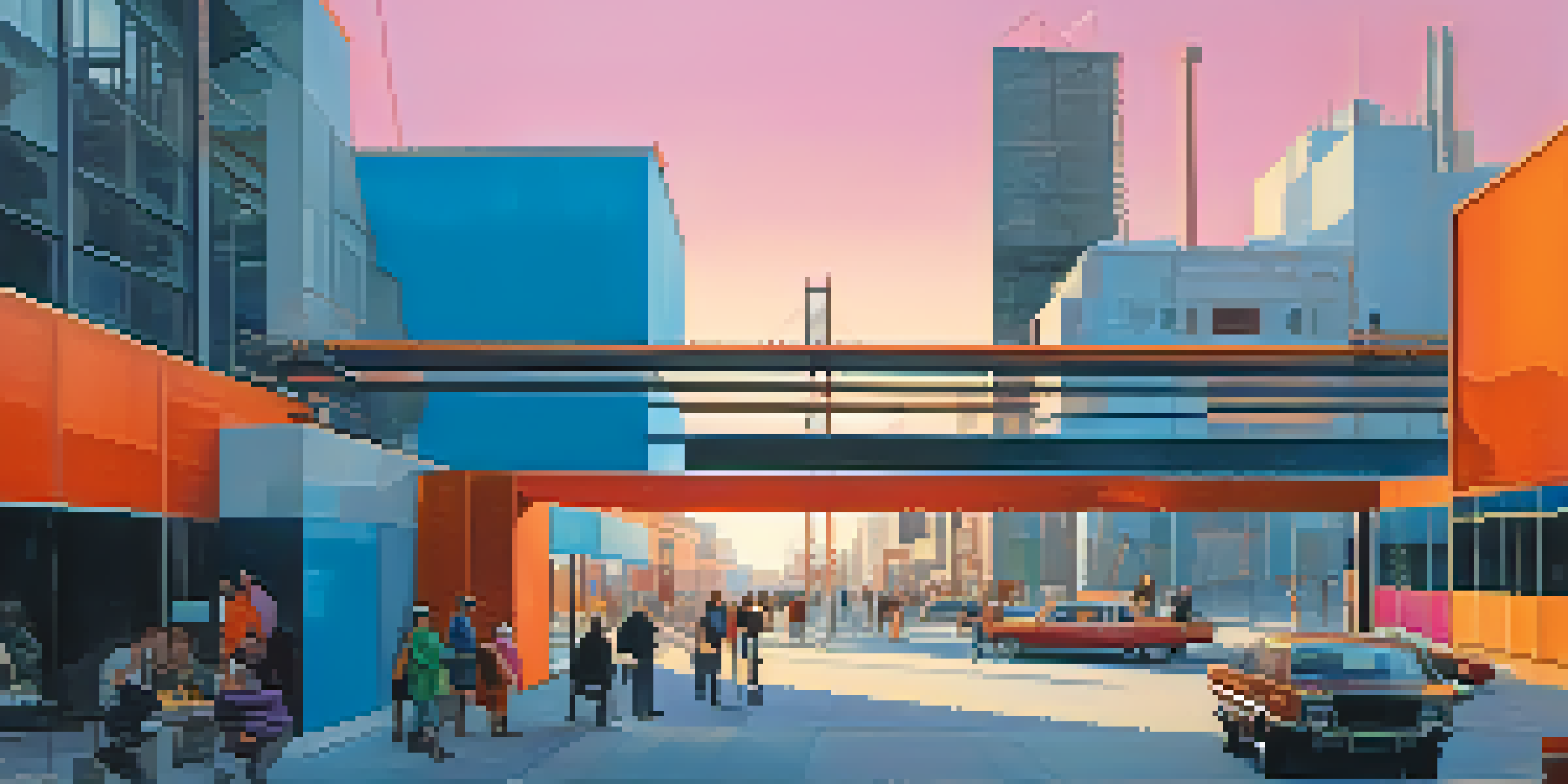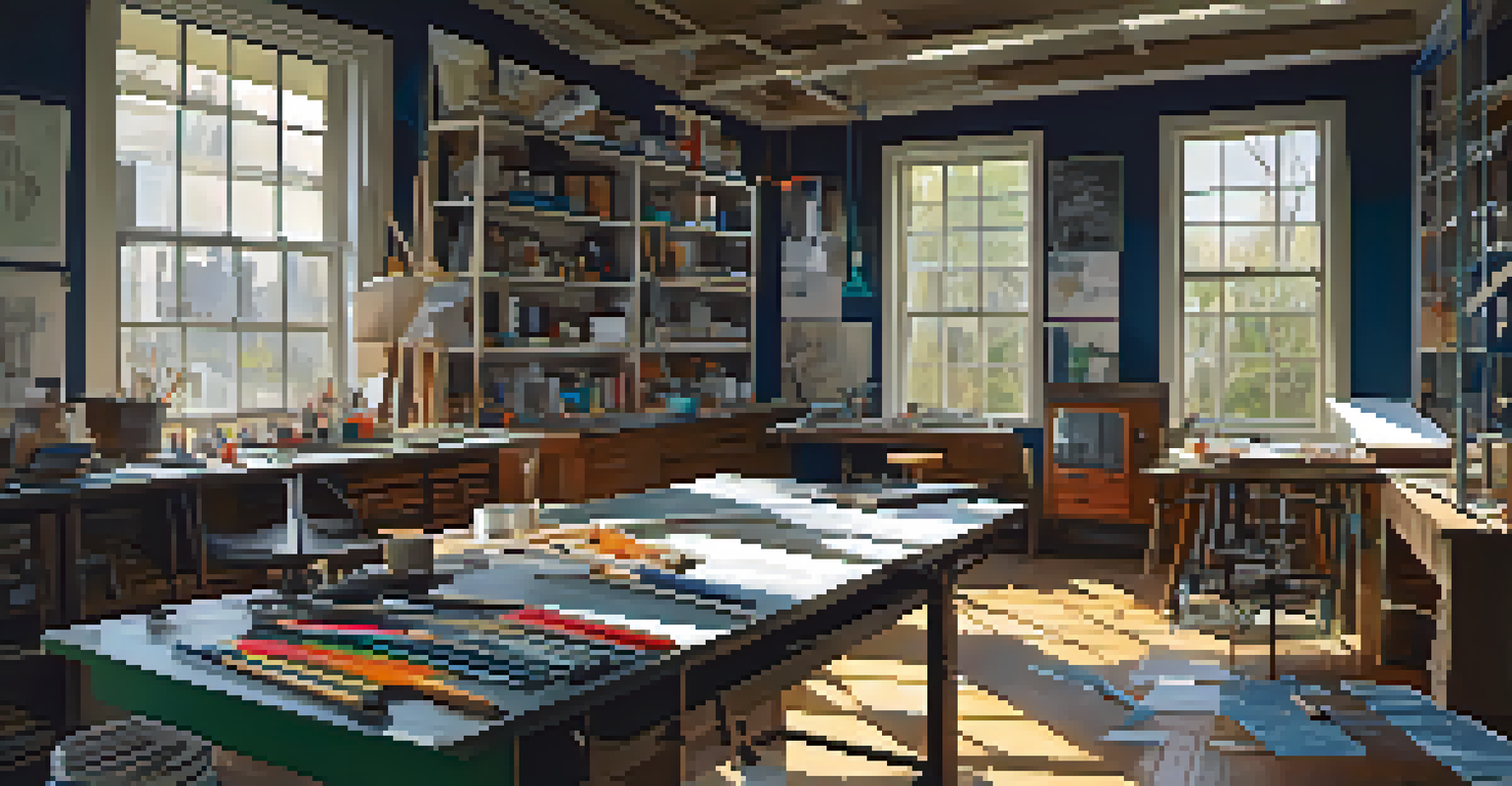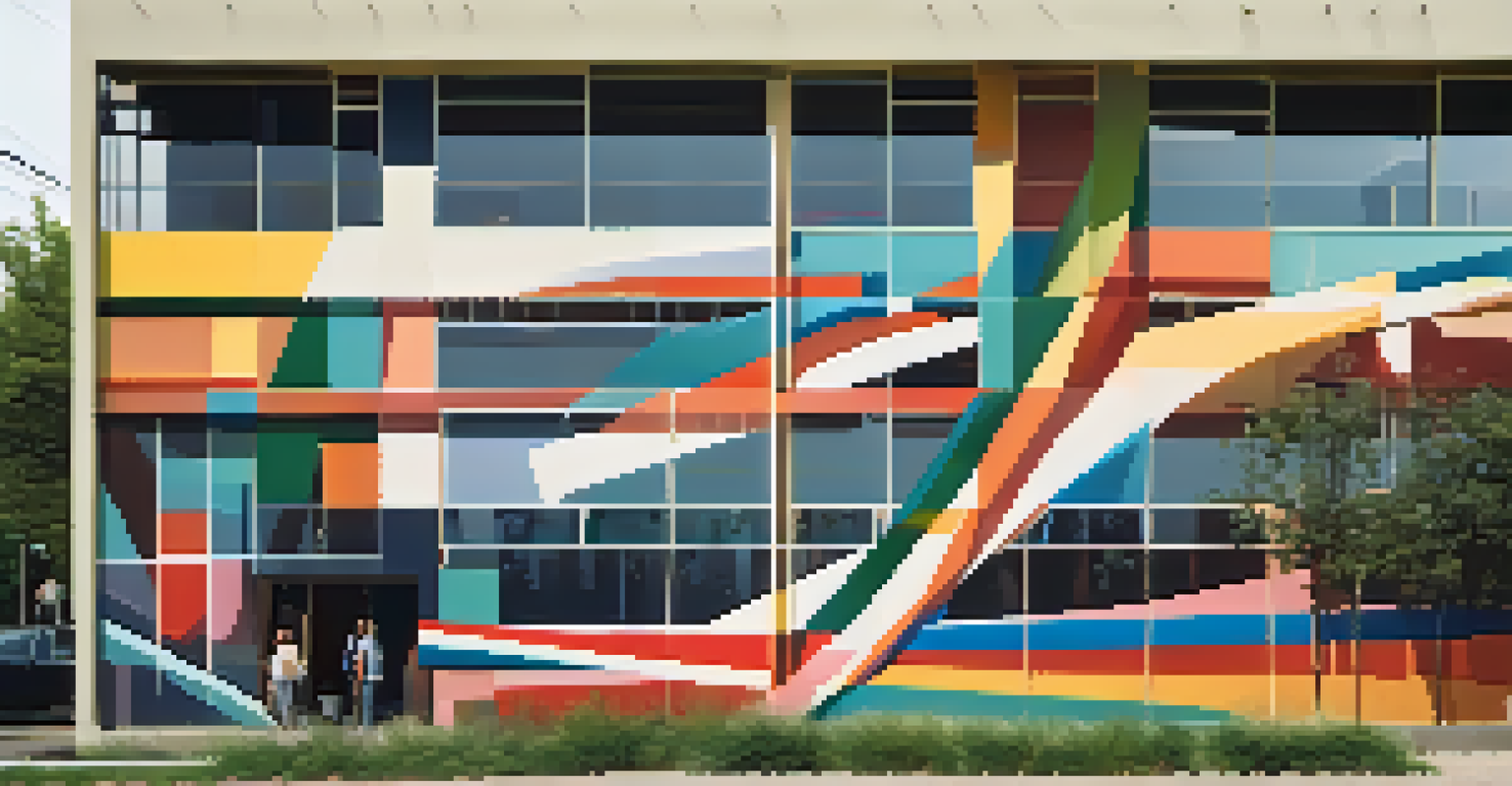Constructivism: Art and Society Manifestos of Change

Understanding Constructivism: A Brief Overview
Constructivism emerged in the early 20th century as a revolutionary art movement. Originating in Russia, it sought to break away from traditional artistic forms and instead embraced a more utilitarian approach to art. Artists aimed to create work that served a social purpose, reflecting the ideals of the time, particularly in the wake of the Russian Revolution.
Art is not a mirror to reflect reality, but a hammer with which to shape it.
At its core, Constructivism was about integrating art into everyday life. This meant that art wasn't just for galleries or museums; it had to be accessible and relevant to the common person. The movement championed the idea that art should contribute to the collective good, often merging aesthetics with practical applications.
As artists experimented with new materials and techniques, they laid the groundwork for modern design, architecture, and even graphic art. Constructivism’s emphasis on function over form resonates today, influencing various fields and encouraging a blend of creativity and practicality in artistic endeavors.
The Philosophical Roots of Constructivism
Constructivism was deeply influenced by the philosophical ideas of the time, particularly Marxism and utilitarianism. These philosophies emphasized the importance of collective action and the role of art in societal transformation. Artists believed that through their work, they could inspire change and promote a new social order.

This philosophical foundation encouraged artists to think beyond the canvas. They began to explore how art could engage with politics and community, seeing themselves as agents of social change. This perspective led to a more collaborative approach to art-making, where artists worked alongside engineers, architects, and the community.
Art as a Tool for Social Change
Constructivism emphasized that art should serve a social purpose and contribute to the collective good, reflecting the ideals of its time.
Moreover, the Constructivist ethos challenged the notion of the 'genius artist.' Instead of celebrating individual creativity, it focused on the collective process. This shift in perspective championed teamwork and innovation, making art a communal experience rather than a solitary pursuit.
Key Figures in the Constructivist Movement
Several influential figures emerged from the Constructivist movement, each contributing uniquely to its development. Artists like Vladimir Tatlin and Alexander Rodchenko were pivotal in shaping the visual language of Constructivism, using geometric forms and industrial materials. Their work often blurred the lines between art and architecture, showcasing the movement's commitment to functionality.
The artist is not a special kind of person; rather, each person is a special kind of artist.
Tatlin's 'Monument to the Third International' is perhaps one of the most iconic examples of Constructivist architecture. It symbolized the radical spirit of the revolution and the potential of art to impact society. Meanwhile, Rodchenko's innovative use of photography and graphic design helped redefine how visual communication could serve social purposes.
Beyond these figures, many artists collaborated on projects that aimed to elevate the role of art in society. These collaborations not only enriched the movement but also fostered a sense of camaraderie among artists, reinforcing the idea that art should be a tool for societal progress.
Constructivism's Impact on Modern Art and Design
The influence of Constructivism can still be seen in contemporary art and design today. Its emphasis on function and social relevance has inspired countless artists to create work that addresses pressing societal issues. This legacy is evident in movements like social practice art, where artists actively engage with communities to foster change.
Moreover, Constructivism’s aesthetic principles have permeated modern graphic design and architecture. The use of bold colors, geometric shapes, and an emphasis on functionality can be traced back to the ideas championed by Constructivist artists. This has led to a design philosophy that prioritizes clarity and purpose.
Collaboration Over Individualism
The movement challenged the notion of the 'genius artist,' promoting a collective approach to art-making that emphasized teamwork and innovation.
As we navigate an increasingly complex world, the Constructivist focus on art as a means of social engagement remains vital. Artists today continue to draw inspiration from this movement, using their platforms to address issues such as inequality, environmental challenges, and social justice.
The Role of Technology in Constructivism
Technology played a significant role in the evolution of Constructivism, as artists embraced new materials and methods. The advent of industrialization provided them with access to innovative materials like metal and glass, which they incorporated into their works. This not only expanded the possibilities of artistic expression but also aligned with the movement's utilitarian ideals.
Constructivist artists were pioneers in exploring the intersection of art and technology. They experimented with photography, film, and even early forms of multimedia, which allowed them to reach wider audiences and communicate their messages effectively. This embracing of technology highlighted their belief that art should evolve with society.
Today, this relationship between art and technology remains crucial. Modern artists often leverage digital tools and platforms to engage with audiences, echoing the Constructivist ethos of accessibility and social relevance. As technology continues to advance, artists find new ways to innovate and challenge the status quo, just as their Constructivist predecessors did.
Constructivism and Political Ideology
Constructivism was not just an artistic movement; it was deeply intertwined with political ideology. Emerging during a time of significant social upheaval, artists sought to align their work with the revolutionary spirit of the era. They believed that art could serve as a catalyst for social change, promoting the values of the new Soviet society.
This political engagement often resulted in art that was explicitly propagandistic, utilizing bold imagery and slogans to communicate messages. Constructivist artists were tasked with creating works that would inspire the masses and foster a sense of unity. This close relationship between art and politics raised questions about the role of the artist in society.
Legacy of Functionality in Design
Constructivism's principles continue to influence modern art and design, inspiring work that addresses societal issues while prioritizing functionality.
While some may argue that this compromised artistic freedom, others view it as a powerful statement of purpose. The idea that art should serve the public good continues to resonate today, prompting contemporary artists to reflect on their responsibilities in a world filled with social and political challenges.
The Legacy of Constructivism in Today's Society
The legacy of Constructivism extends far beyond the confines of art history; it continues to influence contemporary society. The movement's core principles of social responsibility and functionality resonate in various fields, including architecture, design, and public art. Many modern artists and designers strive to create works that not only serve aesthetic purposes but also address social issues.
Initiatives that promote community engagement and social practice art embody the Constructivist spirit. These projects often involve collaboration with local communities, fostering a sense of ownership and empowerment. By prioritizing the needs and voices of the community, artists honor the movement's commitment to collective progress.

As we reflect on the impact of Constructivism, it's clear that its ideals remain relevant. In a world facing numerous challenges, the call for art that inspires change and fosters dialogue is more important than ever. The Constructivist legacy encourages us to envision a future where art continues to be a force for good in society.